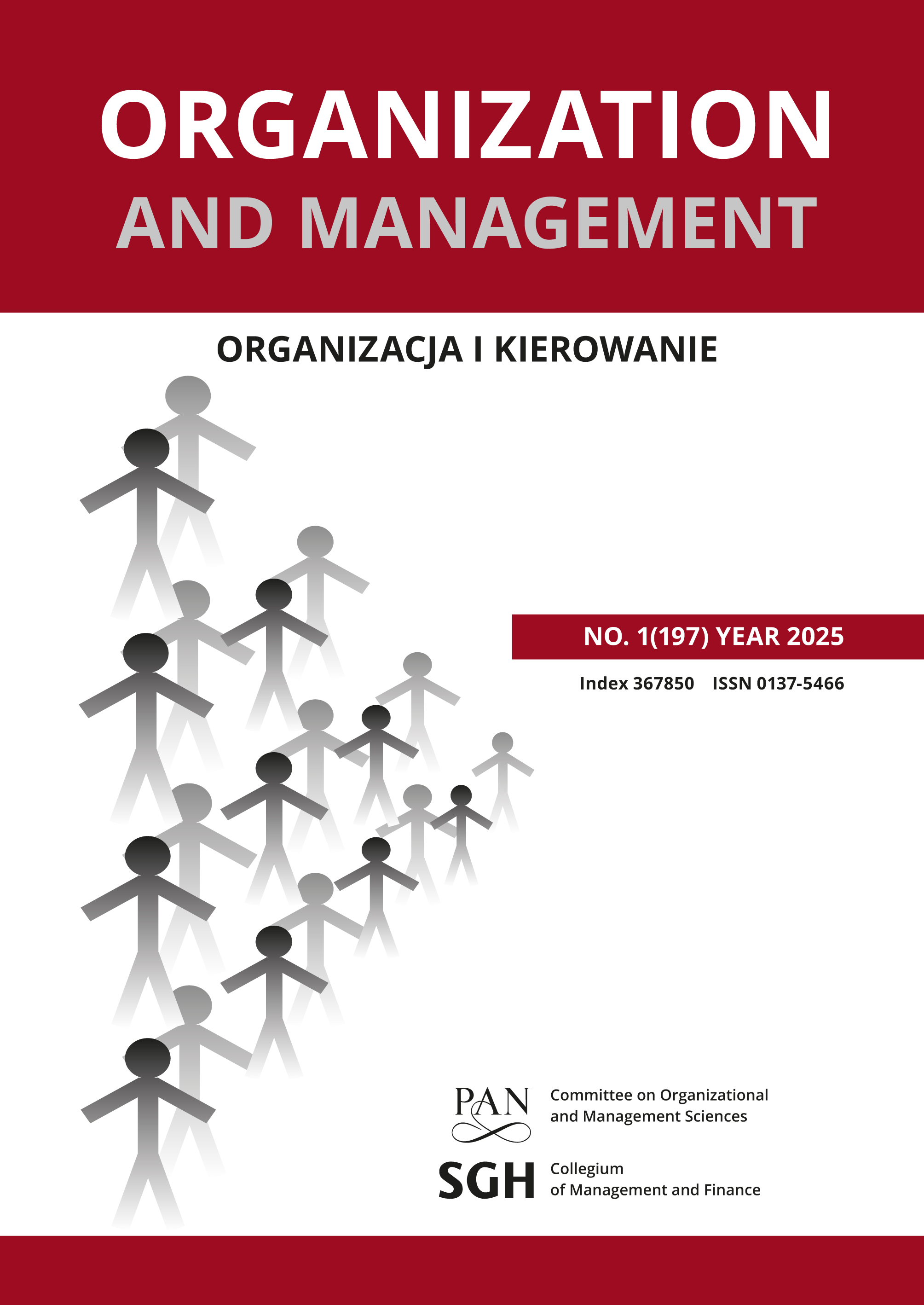Method of Determining the Enterprise Development based on Recourses/Competences Importance – Competitive Potential Matrix
Main Article Content
Abstrakt
The aim of the article is to propose a method of determining the company’s development basing on the recourses/competences importance – competitive potential matrix (RP matrix) from which top managers can find out on which stage of development is their company. The matrix has a special value and is a source of important information in case of checking the organization development in comparison to past years. The matrix can also be useful when the company wants to find out if the changes the company has made are sufficient in improving company’s development or it needs to make more changes in business model to reach the desired level of development. Another application of the matrix is its usage in preventive checking of the way of development or maintaining a certain previously set level. Empirical verification of organization development changes was developed on the basis of results of direct interviews conducted with representatives of the senior management of dairy cooperatives from Świętokrzyskie Voivodship with the help of interview questionnaire. Analysis of the data showed that all analyzed cooperatives were in the “extraordinary development” field of the matrix before and after 3 years. Compared to the base year, the cooperatives improved their position, which may indicate the correct development path chosen by the management.
Article Details
Bibliografia
Amit R., Schoemaker P. J. H. [1993], Strategic assets and organizational rent, Strategic Management Journal 14: 33–46.
Amit R., Schoemaker P. [2016], Firm resources, in: Augier M, Teece D. (Eds.), The Palgrave Encyclopedia of Strategic Management, Palgrave Macmillan, London: 1–5.
Barney J. [1991], Firm resources and sustained competitive advantage, Journal of Management 1 (17): 99–120.
Błażej M. et al. [2022], Business tendency in manufacturing, construction, trade and services 2000–2022 (April 2022), Statistics Poland, Warsaw.
Bowman C., Ambrosini V. [2003], How the resource-based and the dynamic capability views of the firm inform corporate-level strategy, British Journal of Management (14): 289–303.
Bratnicki M. [2000], Kompetencje przedsiębiorstwa. Od określenia kompetencji do zbudowania strategii, Agencja Wydawnicza Placet, Warsaw.
Collis D. J., Montgomery C. A. [1995], Competing on resources: Strategy in the 1990s, Harvard Business Review, July-August: 118–128.
Combs J. G., Ketchen Jr. D. J. [1999], Explaining interfirm cooperation and performance: Toward a reconciliation of predictions from the resource-based view and organizational economics, Strategic Management Journal 9 (20): 867–888.
Koehler J. [n.d.], A guide to organizational resources and how to manage them, University of Arkansas Grantham, Little Rock.
Konieczna I. [2017a], Autorska wskaźnikowa metoda pomiaru elementów konstytuujących model biznesowy, Studia i Prace Kolegium Zarządzania i Finansów (156): 65–88.
Konieczna I. [2017b [, Model realizacji celów strategicznych a model biznesowy organizacji, Przegląd Organizacji (4): 13–18.
Lewin P., Phelan S. E. [1999], Firm, strategies, and resources: Contribution from Austrian economics, The Quarterly Journal of Austrian Economics 2: 3–18.
Prahalad C. K., Hamel G. [1990], The core competence of the corporation, Harvard Business Review 68: 275–292.
Sirmon D. G., Hitt M. A., Ireland R. D. [2007], Managing firm resources in dynamic environments to create value: Looking inside the black box, Academy of Management Review 1: 273–292.
Slater S. F. [1997], Developing a customer value-based theory of the firm, Journal of the Academy of Marketing Science 2: 162–167.
Stankiewicz M. J. [2002], Konkurencyjność przedsiębiorstwa. Budowanie konkurencyjności przedsiębiorstwa w warunkach globalizacji, TNOiK Dom Organizatora, Toruń.
Tokuda A. [2005], The critical assessment of the resource-based view of strategic management: The source of heterogeneity of the firm, Ritsumeikan International Affairs 3: 125–150.
Wahl M., Prause G. [2013], Toward understanding resources, competencies, and capabilities: Business model generation approach, Entrepreneurship And Sustainability Issues 1 (2): 67–80.
Wernerfelt B. [1984], A resource-based view of the firm, Strategic Management Journal 5: 171–180.
